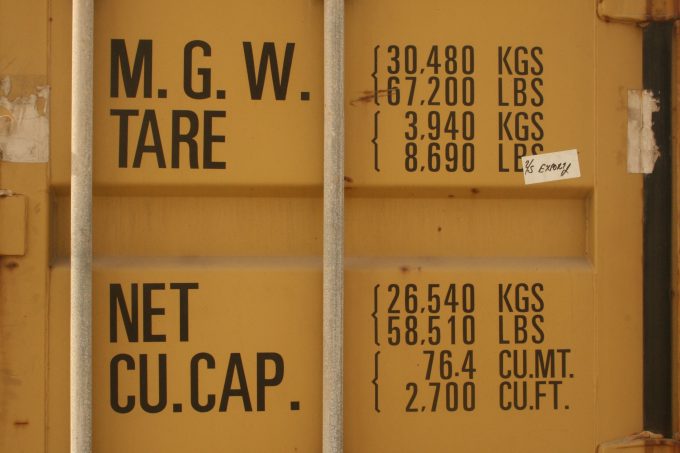Going green gives forwarders 'a competitive edge' – but it can be costly
Increased competitive advantage is reported as the primary benefit for freight forwarders ‘going green’, according ...

There are just over 100 days before the IMO’s SOLAS amendment requiring that the verified gross mass (VGM) of a container must be signed-off before it is loaded on board a vessel, but applications by UK companies to become accredited “weighers” are apparently not being ...
CMA CGM South Korean staff strike over bonuses after bumper 2024 profit
MSC switches two more Asia-Europe port calls from congested Antwerp
CMA airline returns two freighters, while ANA takeover of NCA looms
Nightmare for Bangladeshi exporters as congestion and tariffs bite
Tradelanes: Export boom in Indian sub-continent triggers rise in airfreight rates
Carriers introduce surcharges as congestion builds at African ports
Ports and supply chain operators weigh in on funding for CPB
Box ship overcapacity threat from carrier appetite for new tonnage

Comment on this article
Y K Chan (Mr)
March 16, 2016 at 3:01 pmA Solution for VGM
As a veteran in containerization and shipping, I propose the following to resolve the issue of SOLAR’s ‘verified gross mass’ (VGM):
1. On booking, a container shipper shall electronically sign a VGM form stating that the Shipper hereby authorizes the Carrier and/or its agent to recheck cargo weight and declare VGM on his behalf – in addition to furnishing his interim cargo weight. Shipper also agrees to pay the Carrier a penalty (to be proposed by Carrier) should his declared interim cargo weight is found to deviate for more than 5% from the verified cargo weight – calculated by the VGM less the container tare weight.
2. Most ship-to-shore container gantry cranes have weight meters. Upon lifting by the gantry crane , the actual gross weight, container tare weight and verified cargo weight shall be eletronically added onto the VGM form.
3. For those gantry cranes without weight meter, a weight bridge will probably be needed.
4. From the viewpoint of a ship’s structural strength, the VGM of a container bay (a summation of many container VGMs) is much more important than that of VGM of one individual container.
Regards – Y K Chan. CoboShip/Hong Kong
Jerry vandenbent
March 17, 2016 at 4:50 pmAny method is better than nothing, but if I may throw in my 2 cents, I would like to mention that containers should be weighed and certified before going into the last stage of loading on board the vessel by the container crane, why:
containers are being planned in the stow plan based amongst others on weight, heavy ones go down into the hold and lighter ones go on deck, therefore if it is being asserted by the container crane during loading on the vessel, that the weight of the container is way off the declared weight, it is too late!!! we now have a problem:
1) if we unload the container off the vessel due to its incorrect weight, we are creating big delays, the container has to be send back to the storage area, the stow plan has to be changed, which creates more and more delays or
2) If we leave the container where it is being loaded on the vessel we could have created a dangerous situation on the vessel
Of course 1 container would not create that much of a difference, but unfortunately my experience tells me that most containers are being declared with incorrect weights
As a final remark and solution, most ports have a weighbridge, when the container enters the port facility, where the correct weight is being documented and correct measures can be taken, thus avoiding all the problems as being described as per the above
If the port facility does not have a weighbridge, than a certified organization should issue an official weight certificate by a surveyor at the loading facility of the Shipper
With regards to a penalty for the Shipper , I believe that is all up to the Lines,
In case of transhipment containers, the weight can be checked by the container crane during discharge and can be corrected accordingly